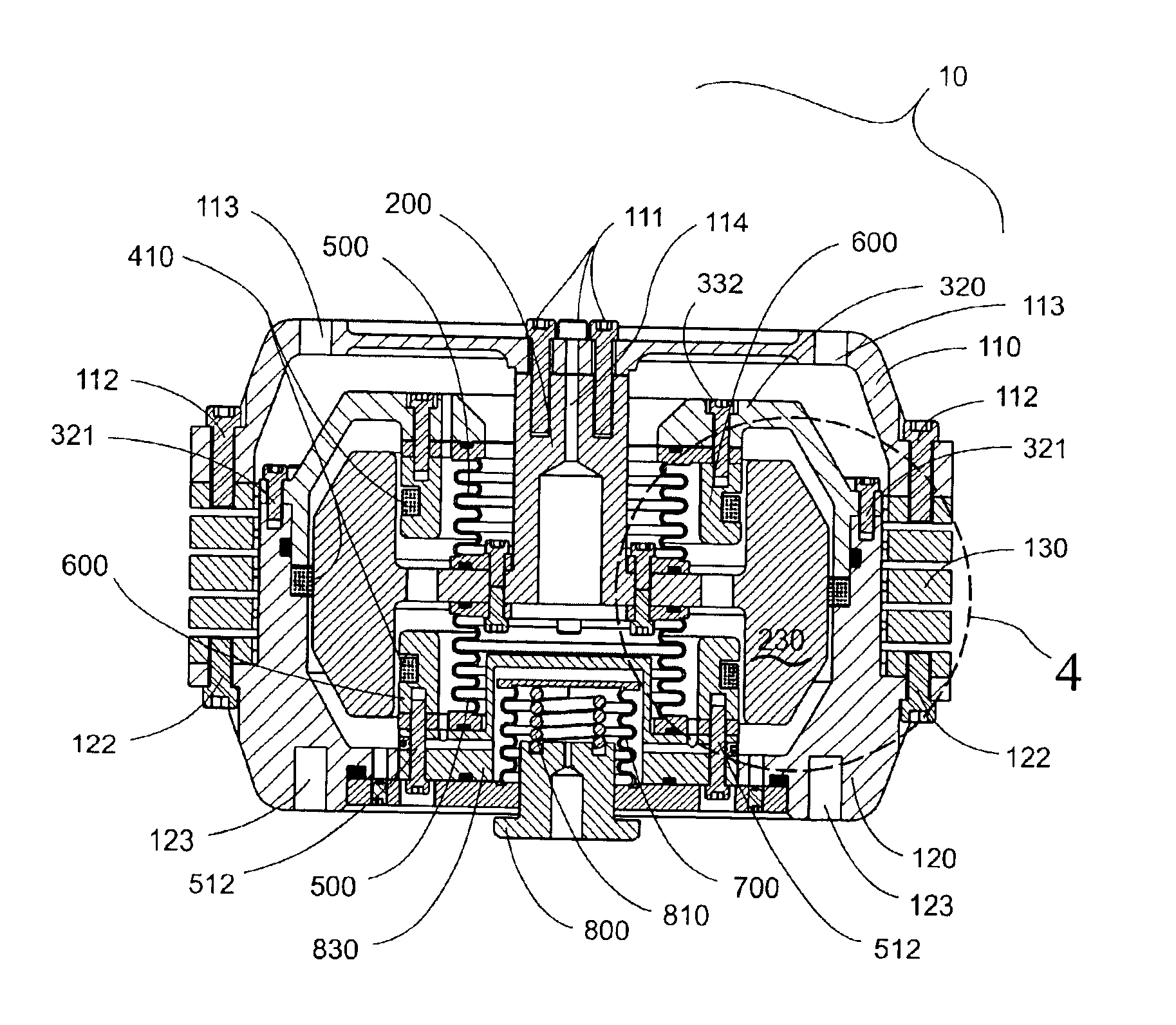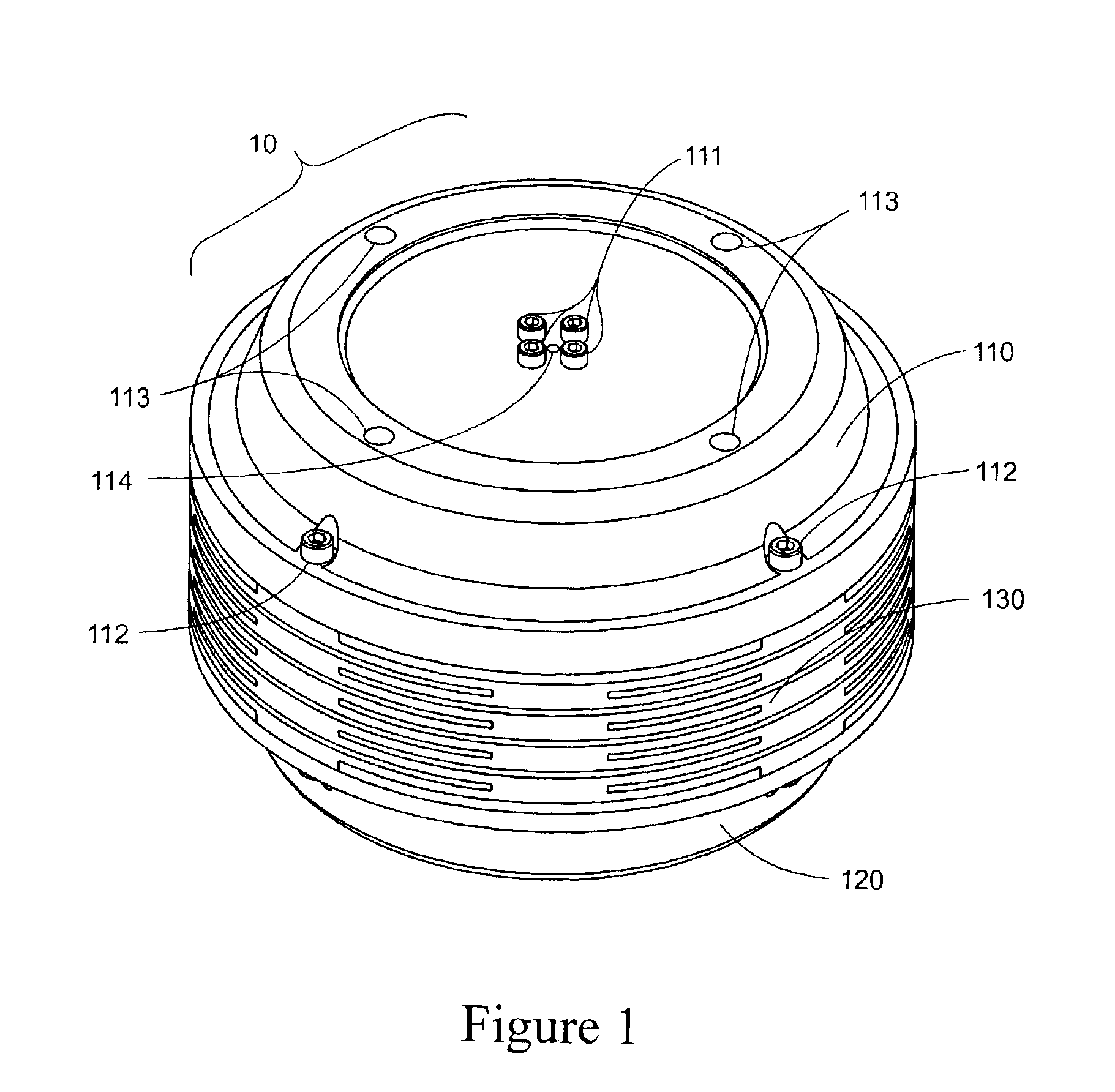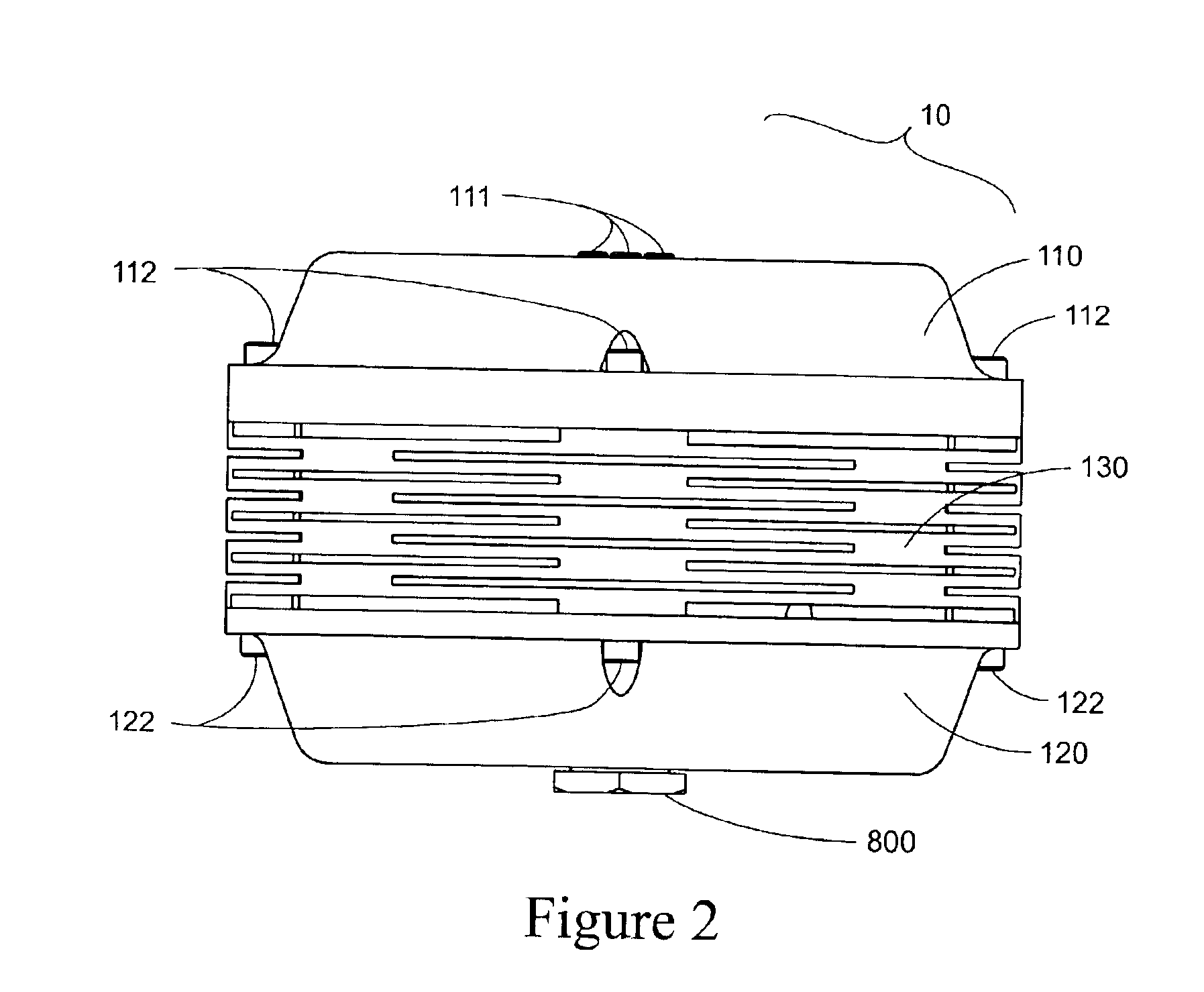Magnetorheological fluid vibration isolator
a fluid vibration isolation and magnetorheological technology, applied in mechanical devices, machine supports, shock absorbers, etc., can solve the problems of fluid leakage, rapid wear of sealing devices incorporating dynamic type sealing, and maintenance of good lateral alignment of moving components, so as to increase the stiffness of the second load path, increase the effective viscosity of the fluid, and the effect of significant variation of the effective stiffness of the devi
- Summary
- Abstract
- Description
- Claims
- Application Information
AI Technical Summary
Benefits of technology
Problems solved by technology
Method used
Image
Examples
Embodiment Construction
[0032]Described in detail below is a magnetorheological fluid device offering vibration isolation and magnetorheological fluid modulated damping in a high load carrying and compact form. In the description, for purposes of explanation, many specific details are set forth in order to provide a thorough understanding of the present invention. However, the present invention may be practiced without these specific details, as would be obvious to one skilled in the art.
[0033]A magnetorheological fluid modulation damped vibration isolator (MRFMD isolator) 10 is depicted in isometric view in FIG. 1 and in side view in FIG. 2 in accordance with an embodiment of the invention. The exterior of the MRFMD isolator 10 is comprised of a low profile cylindrical flexure structure 130 having a top end cap 110 and bottom end cap 120 mounted at the two ends of the flexure structure.
[0034]FIG. 3 shows a cross section view of the MRFMD isolator 10. The internal, damping element components and features o...
PUM
 Login to View More
Login to View More Abstract
Description
Claims
Application Information
 Login to View More
Login to View More - R&D
- Intellectual Property
- Life Sciences
- Materials
- Tech Scout
- Unparalleled Data Quality
- Higher Quality Content
- 60% Fewer Hallucinations
Browse by: Latest US Patents, China's latest patents, Technical Efficacy Thesaurus, Application Domain, Technology Topic, Popular Technical Reports.
© 2025 PatSnap. All rights reserved.Legal|Privacy policy|Modern Slavery Act Transparency Statement|Sitemap|About US| Contact US: help@patsnap.com



